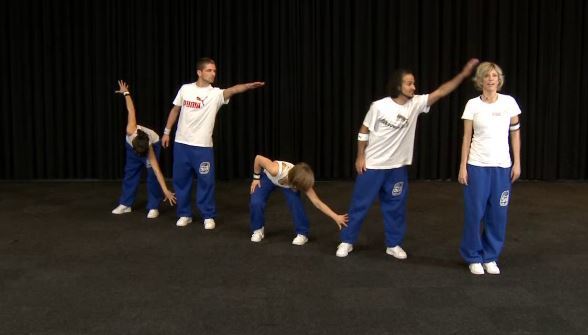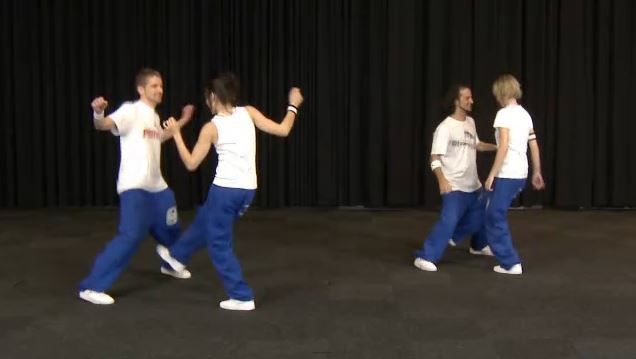General Informations
In this section, the dance moves are not the main focus; examples from the category Tips & methods provide concrete inputs for forms of organisations and exercises as well as inspiration for successful choreographies. The examples also contain suggestions for methodical-didactical implementation ways for working with music.
The focus is on a variety of actions to learn, use and arrange dance steps.
Acquiring and consolidating a movement pattern in Formations and use of space present some variety.
Helpful prerequisites:
- Experience with movement and music
- Sequence of movement has been acquired (sequence has been learned by heart)
- Cognitive skills such as imagination, orientation in space
Tips for implementation:
- It is useful to prepare a rough sketch of the formation and the use of space. This also serves as a visual aid for the students. Please see "examples from schools" for a practical example.
- Only certain uses of space may be employed, according to the skills of the students.
- Please see "examples from schools" for a practical example
- Play some music during the practice phase (motivation). The sound volume can be varied.
Further steps:
- Possible exercise: "How can we get from a circle to a diagonal quickly?" or "What steps would be best in order to change from a circle to a diagonal?"
- For example: choose your own formation in a group of 4 and perform the formation with the steps learned in class.
Tips relating to the music: further information can be found under the heading Tips & methods > Music
- Good, motivating music is very important. Use songs that are currently popular every now and then. Bring faster and slower music to the lesson. These add variety and motivation to lessons.









